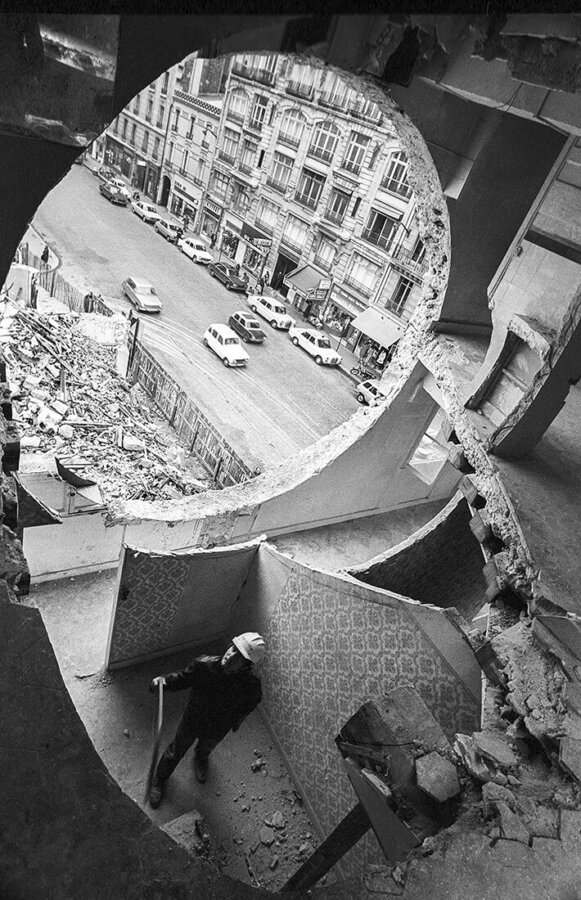
Event
Anarchitecture
Round table on the work of Gordon Matta-Clark
Tuesday 05 June 2018 • 7:30 PM
Jeu de Paume – Paris
Avec Lara Almarcegui, artist; Corinne Diserens, curator; Jessamyn Fiore, co-curator of the exhibition and co-director of the Estate of Gordon Matta-Clark and Jean-Hubert Martin, curator. Moderator: Sergio Bessa, co-curator of the exhibition « Gordon Matta-Clark. Anarchitecte » and Bronx Museum’s Director of Curatorial and Education Programs.
Philip Ursprung identified in anarchitecture “a crucial moment in the recent history of visual culture” that “articulates the ambivalence of the role of the artist as someone working in total freedom—anarchy—and yet subject to the rules and pressures of the political and economic context.” And he adds: “It stands at the very epicenter of a seismic shift that took place in the early 1970s and whose effects we can still feel today. It coincides with the beginning of the economic revolution that is still shaking the societies of the industrialized world—characterized by the deregulation of the labor market, the end of the gold standard, the arrival of computers, huge rises in energy prices and the growth of the financial sector.”
It will not be implausible to suggest that the historical antecedents of the “seismic shift” identified by Ursprung are to be found in the class struggles in nineteenth-century Paris that culminated in the Commune, a parallel that helps us situate Matta-Clark’s unorthodox method, which thus far has been addressed in purely aesthetic terms. After all, Matta-Clark’s practice of piercing houses and building barricades is an inheritance from that era, with a particular nod to anarchist Louis-Auguste Blanqui, whose manual Instructions pour une prise d’armes recommended, “When, on the line of defense, a house is particularly threatened, we demolish the staircase from the ground floor, and open up holes in the floorboards of the next floor, in order to be able to fire on the soldiers invading the ground floor.” Blanqui plays a major role in Walter Benjamin’s The Arcades Project as a precursor of Nietzsche and the idea of the “eternal recurrence.” A short fragment by Benjamin on Blanqui ends thus: “The century was incapable of responding to the new technological possibilities with a new social order,” an assessment that could equally be applied to Matta-Clark’s era. Whether he was aware of Blanqui’s ideas, or how much he knew about the struggles in Paris throughout the nineteenth century, we do not know. But a short account by G. H. Hovagimyan, who assisted Matta-Clark in the creation of Days’ End, stresses the work’s “guerilla/anarchist” dimension that conveyed a “sense of revolutionary barricades evocative of the Paris Commune in the construction of the barrier pile of timbers.”
Sergio Bessa
Round table in the Jeu de Paume auditorium, Tuesday 5 June, 7.30–9.00 pm.
3 euros. Free for members and holders of a ticket for the exhibition on that day.
Information: infoauditorium@jeudepaume.org
